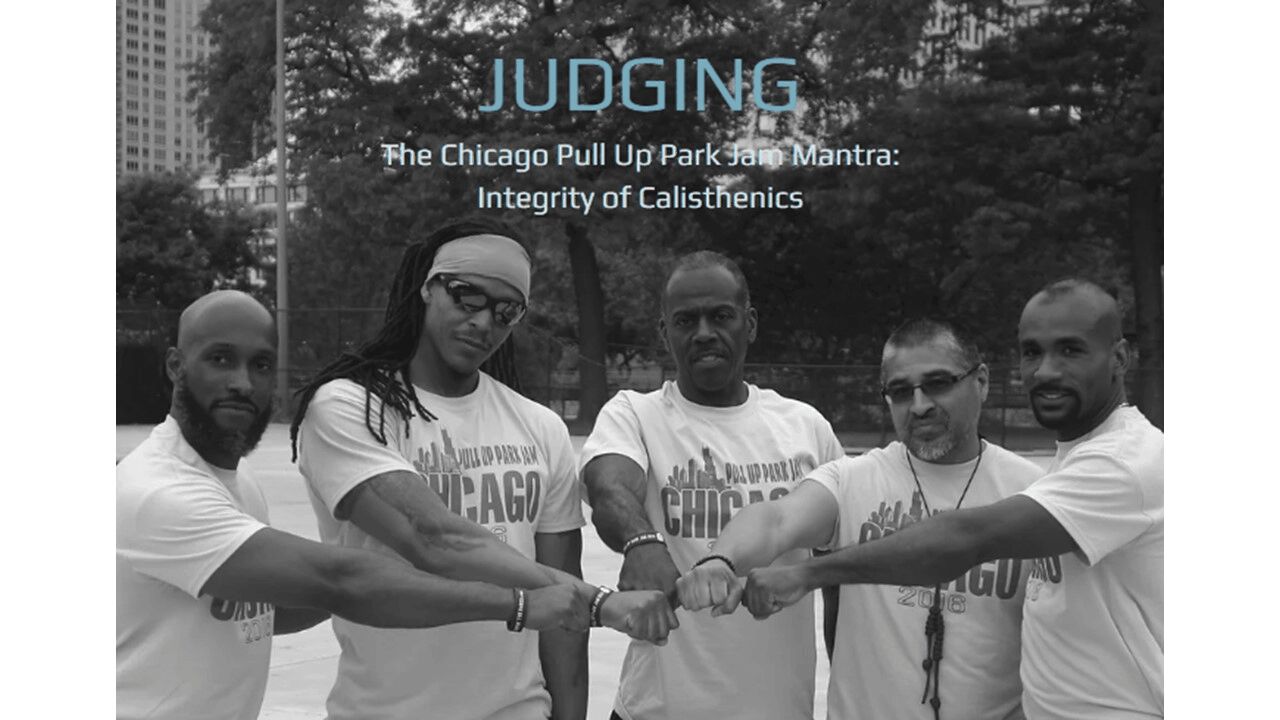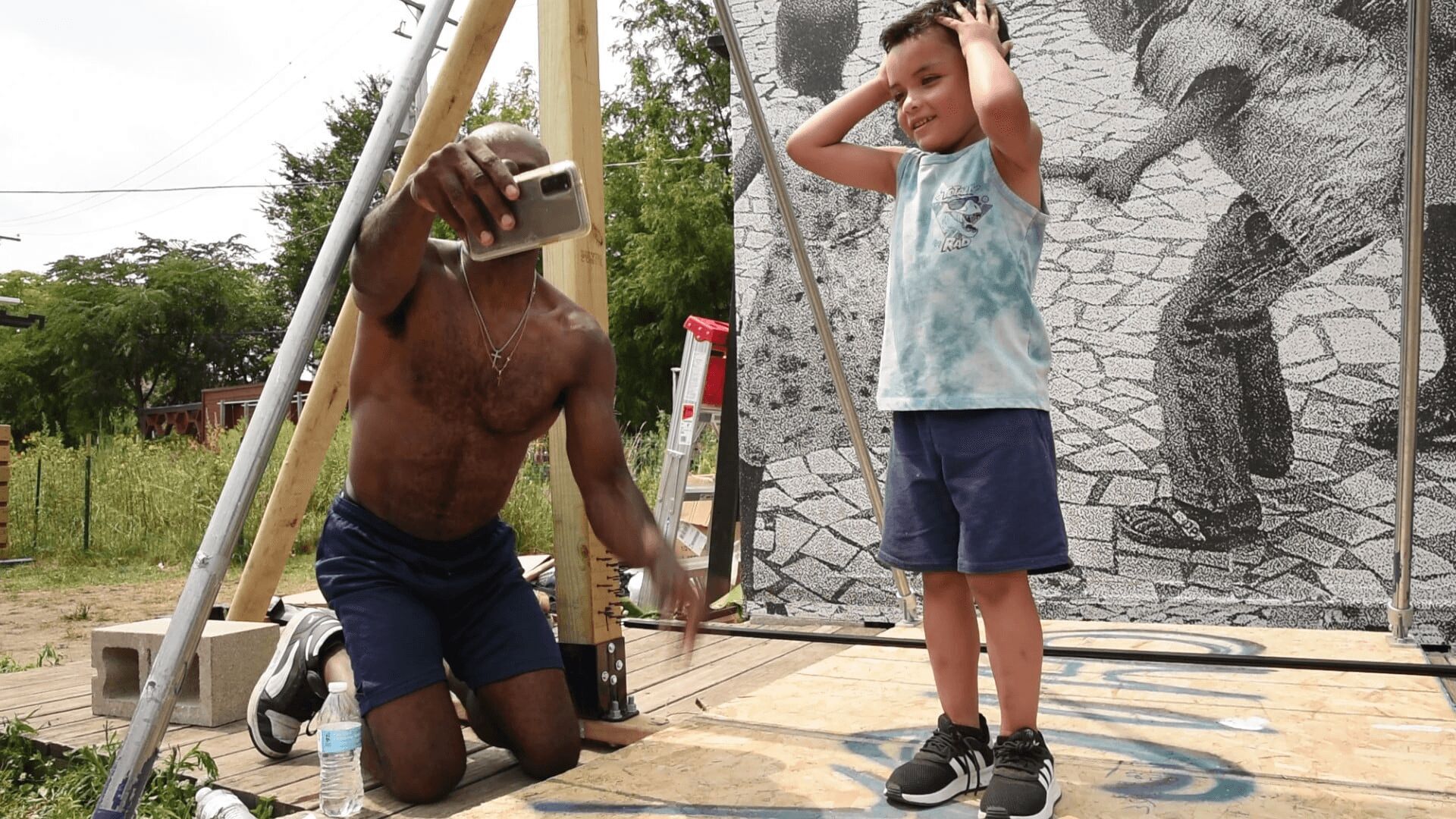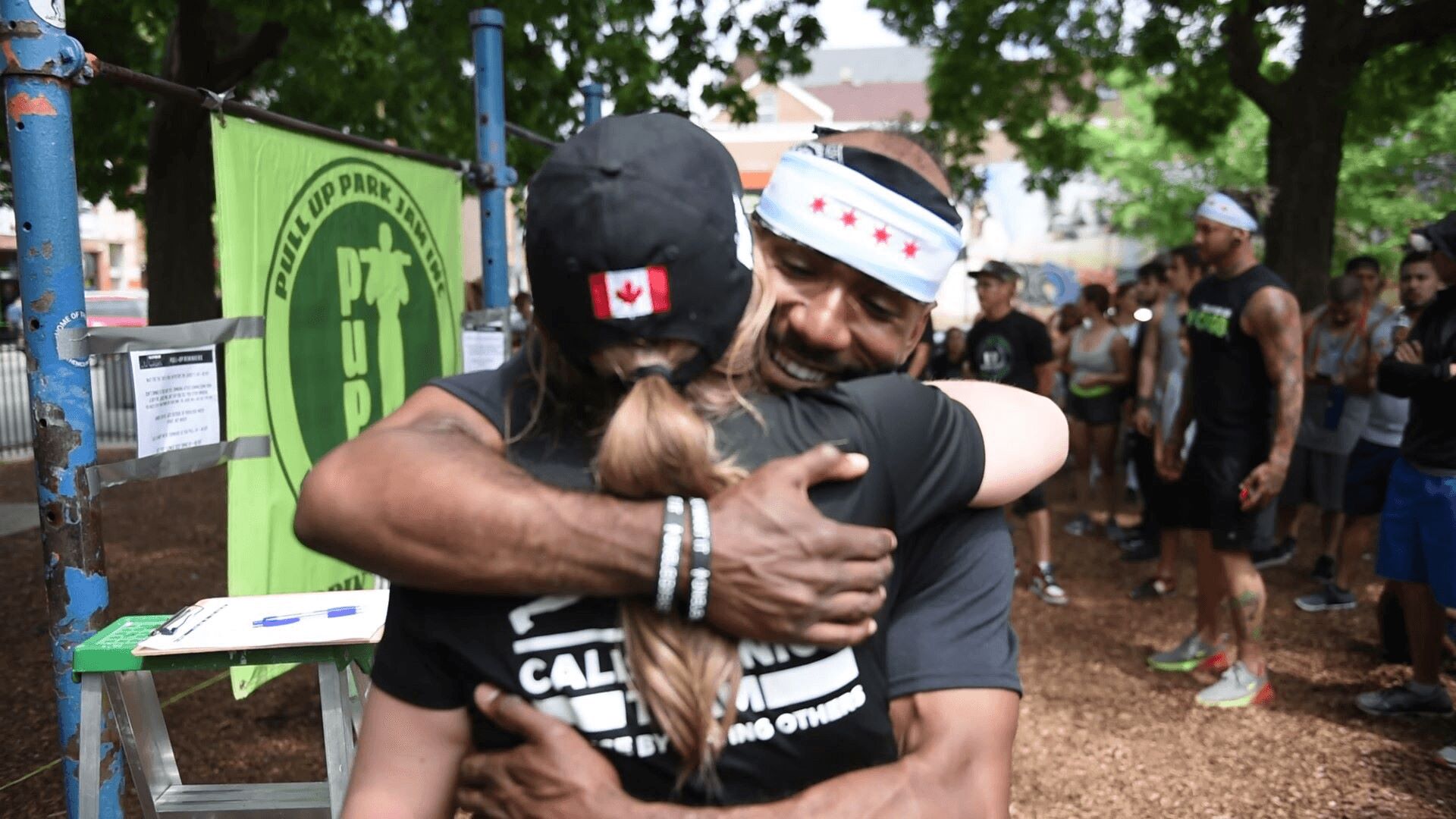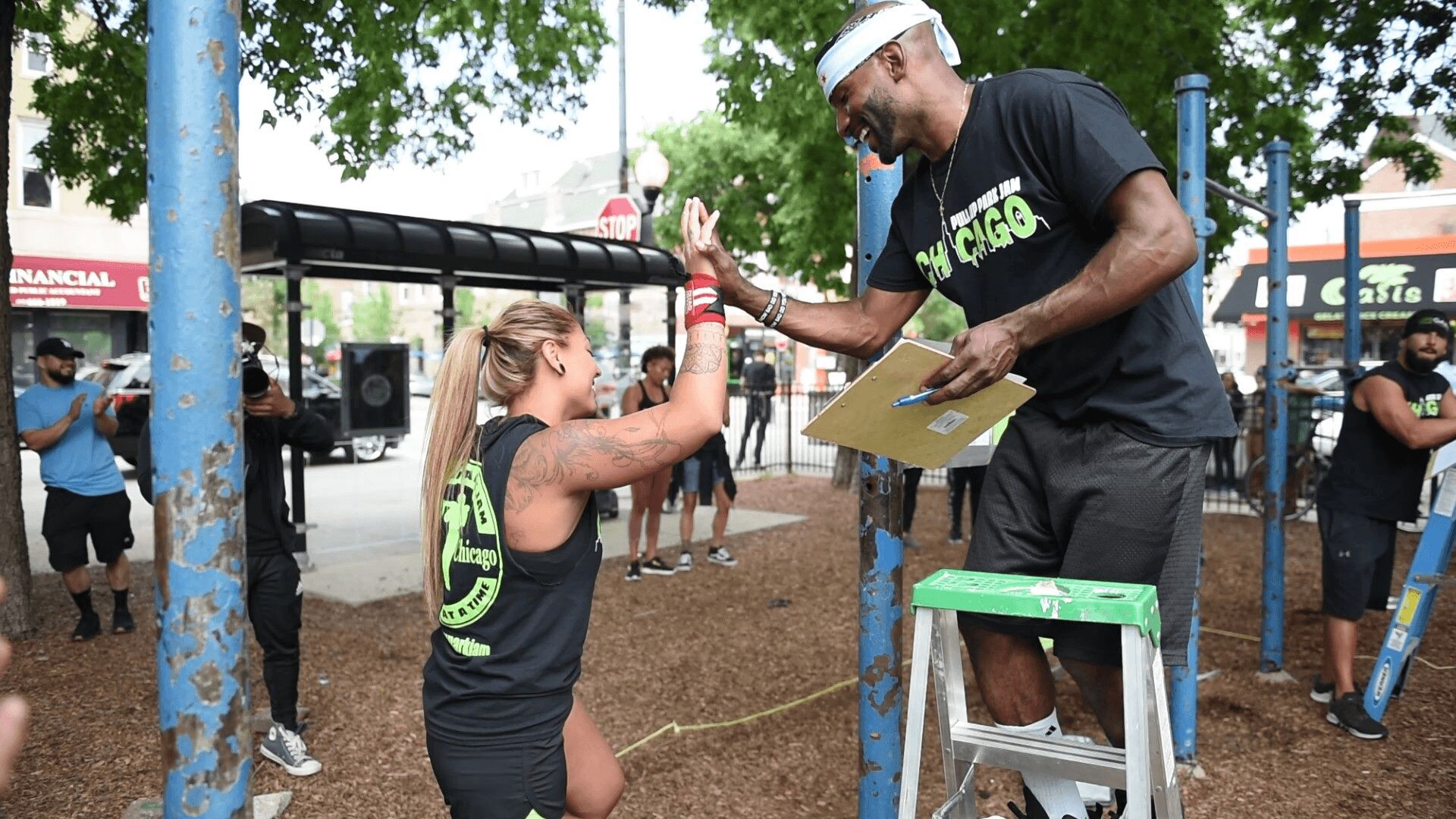Meet Omari Jinaki | Calisthenics Ambassador

We had the good fortune of connecting with Omari Jinaki and we’ve shared our conversation below.
Hi Omari, what’s the most difficult decision you’ve ever had to make?
For 10 years, I’ve managed one of the largest, high quality calisthenics competitions in America. After the 2019 event, I made the difficult decision to make the event much smaller.
2019 was our biggest year ever. We began in 2015 with about 30 competitors. By our 5th year, in 2019, we had nearly 100 registrants. People flew in from all over the country (from Texas, Nevada, North Carolina, New Jersey, and more), and even from around the world — a competitor flew in from China, with multiple competitors from Montreal and Toronto.
This all seemed great. But the quality of the calisthenics suffered – making the sport worse. Also, the fairness of the competition was lost. Why?
Because I simply could not recruit enough qualified judges. My decision was based on throughput – the number of competitors that can pass through the competition in a set amount of time.
THROUGHPUT: The efficiency of the event is all about throughput — like any business operation, whether it’s a restaurant, a hospital, or a bike repair shop. How many competitors can get through in the shortest amount of time?
In a calisthenics competition, the more judges the faster the throughput.
With 2 judges, and 100 competitors, we can then have 2 competitors compete simultaneously on each event for 50 rounds per event. Each round for competitors is pre-set as 2 minutes. The throughput equation is below.
*********************************
50 rounds x
2 minutes per round =
______________________
100 minutes
100 minutes is 1 hour and 40 minutes per event.
There are 5 events, so the throughput time for 5 events is 5 times 1h:40m
= 8 hours and 20 minutes
So with 2 judges, a competition with 100 competitors would take nearly 9 hours to complete.
*********************************
In 2019, I increased throughput by increasing to 10 judges. With 10 judges, and 100 competitors, we can then have 10 competitors compete simultaneously on an event for 10 rounds per event. The new expedited throughput equation is below.
*********************************
10 rounds x
2 minutes per round =
______________________
20 minutes
This is 20 minutes per event.
There are 5 events, so the throughput time for 5 events is 5 times 20 minutes = 100 minutes =
= 1 hour 40 minutes
So at this rate with 10 judges, a competition with 100 competitors would take under 2 hours to complete.
*********************************
The choice seems clear: choosing between 9 hours versus 2 hours, go for the faster event with 10 judges, and complete the competition in 2 hours. Then in future years, continue to recruit judges for the competition, gather more competitors, in order to grow the event in size and revenue and get it done faster.
What the numbers don’t show is how quality of the judges affects the event.
In the years that I have hosted the competition, I have taken numerous routes to recruit judges:
* I paid $200 per judge
* I posted ads in newspapers, on craiglist, on jobsites and more
* I provided free training
* I provided PAID training, I paid potential judges to attend training with me EVEN if they did not take the offer to become a judge
* I sought volunteers
* I contacted organizations that specifically bring together amateur sports officials for gymnastics, football, martial arts, crossfit, high school sports, and more.
Once I had a group of people interested in being a judge I spent hours and hours, and days and days, on weekends for months training judges.
In all of that time and all of those years, I always found that on the day of the competition most judges were very inaccurate. The result was that any two judges would get DRASTICALLY different scores for the same competitor which lowered the integrity of the event. Simply, it was not fair.
Even more, I realized that rather than only having one judge per competitor, the fairness and quality of judging is better with TWO judges per competitor. This meant that if I only have 2 judges, then only ONE competitor can compete at a time. Slowing down the throughput even more, but GREATLY increasing the quality of calisthenics and the fairness of the results.
After 5 long hard years of unsuccessfully recruiting consistent judges, I knew that finding judges was not an easy task. I couldn’t simply or magically have 10 strong, credible, reliable judges appear at the event.
In the throughput equation to determine how long the event will run there are three numbers I can change:
a = number of competitors
b = number of judges
c = time per round
throughput time per event = (a/b)*c
throughput time per event = [(number of competitors)/(number of judges)] * (time per round)
a) number of competitors: I can reduce this easily by announcing limited registrations to the first 20 competitors or 50 competitors. I can make the cap whatever number needed to ensure the event ends in a timely manner.
b) number of judges: after 5 years of attempts I found it very difficult to grow the number of quality judges; the number of judges is unfortunately largely out of my control.
c) time per round: I could easily limit the events to 1 minute or even 30 seconds per event, but that would also move away from the physical challenge and improved health that the event aims to promote.
Of the three numbers the easiest number to change was (a), the number of competitors. I choose to lower and limit the number of competitors. I made this decision right after we had our biggest year ever. It would be natural try to GROW the event, to draw MORE competitors, to build on the momentum, but I did the opposite. I retracted and made the event “smaller” and the QUALITY of the event MUCH higher.
I had people in the calisthenics community tell me that I am ruining calisthenics, and that I am ruining this event in particular, because I am closing it off and limiting access. On the contrary, I thought it would ruin the community to have more people doing poor quality calisthenics without the knowledge and ability to rep with proper form, and without doing the exercises with a full range of motion to use more muscles and improve their strength. I thought it would be worse to give more people a platform and visibility to display poor quality calisthenics. I did not want to display more people doing calisthenics the wrong way.
That year, I also received an offer from Doritos and Pepsi to sponsor the event for $10,000. These companies offered to pay me $10,000 toward the event for me to hand out Doritos and Pepsi to competitors and spectators. This was by far the largest amount of money one entity had ever offered me. I turned it down, quickly and decisively. In America most people die because of health issues they acquire from consuming processed artificial foods like Doritos and sugary drinks like Pepsi. The annual cause of death numbers are below, and these numbers are worse among people of color, which is the community I am most aiming to uplift through the calisthenics community and calisthenics events.
Leading Causes of Death
Heart Disease and/or Stroke: 865,000 deaths
Cancer: 610,000 people deaths
Diabetes: 101,209 people deaths
Kidney and/or Liver Disease: 111,000 deaths
These are philosophical and moral choices every business manager will have to answer. To accept growth even if it hurts the quality of the product, and hurts the community you serve. Or to slow your growth intentionally, to make the outcomes for each person better, and to adhere to your organization’s purpose.
While this does seem like a difficult decision it was truly a no-brainer for me. For me, there is no point in creating a competition with meaningless and unfair results. It’s a waste of everyone’s time and energy. The awards are meaningless. I would not put any of my time or energy into setting up an competition that had no real meaning. So if the event were to grow very large with results that were unfair, I would walk away completely, and the event would disappear completely. It was better for me to do what I could do well, rather than to discontinue the event.

Alright, so let’s move onto what keeps you busy professionally?
The story of my career is best told in person.
I’ve been at the echelon of corporate work, and intentionally exited and set new roots in more meaningful work under the radar. It’s been a remarkably fulfilling choice.
It was and continues to be extremely difficult. Every day I am reminded of why I do it, and dive in for the challenge.

Let’s say your best friend was visiting the area and you wanted to show them the best time ever. Where would you take them? Give us a little itinerary – say it was a week long trip, where would you eat, drink, visit, hang out, etc.
1. Tierra Mia in Echo Park – I get most of my work and creative projects done sitting there sipping a green tea for 6 hours.
2. Open Mic Night at The Hotel Cafe or on Sundays at Third Wheel
3. Tribal Cafe on Temple
4. Hike up to Inspiration Point.

Shoutout is all about shouting out others who you feel deserve additional recognition and exposure. Who would you like to shoutout?
Keith Fields and Ray Funn, the founders of the Pull Up Park Jam as the 5Bs Competition in Brooklyn in 1998. Even more than their courage and innovation, I am struck by their heart. The heart and spirituality they infuse into each event is an ambition I continue to reach for, never doing it as well as they have.
Rodney “Redd” Harrison – who re-branded the Pull Up Park Jam and incorporated it as a non-profit, while growing it to global audiences.
Valentine Martinez and his family — the logistics burden of the Pull Up Park Jam operated fully out of his warehouse for years. Without him, I would have never hosted the event in 2020 and beyond. Along with Isaias Nava, Jr. who hand built the equipment for the competition along with me.
Our first crop of judges on the West Coast for the Los Angeles competition: Cisko, Andrew, Luis, Juan, Yanil. This was the first year we implemented the 2 judges per competitor, and this was by far the best judged year of competition we’ve had in 10 years. You re-birthed the Pull Up Park Jam and set a global standard for how calisthenics competitions are ideally judged.
I will have to write a book to fully acknowledge all of the additional people that deserve it.
Website: https://www.thepullupparkjam.org/
Instagram: https://www.instagram.com/toro_calisthenics/
Youtube: https://www.youtube.com/channel/UCGmfyF9XcDvBIOH8kHnYyAA




